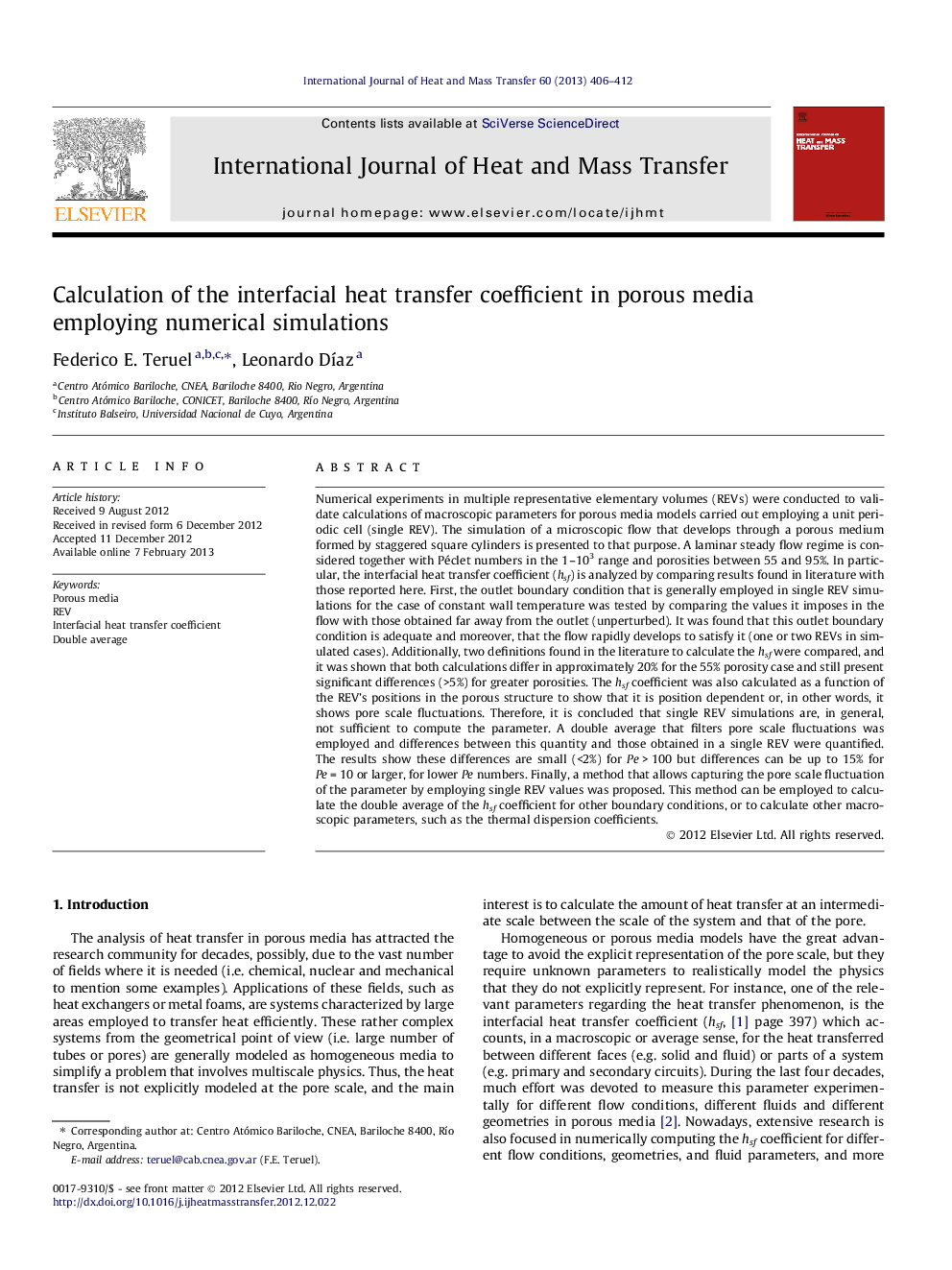| کد مقاله | کد نشریه | سال انتشار | مقاله انگلیسی | نسخه تمام متن |
|---|---|---|---|---|
| 658312 | 1458082 | 2013 | 7 صفحه PDF | دانلود رایگان |
عنوان انگلیسی مقاله ISI
Calculation of the interfacial heat transfer coefficient in porous media employing numerical simulations
دانلود مقاله + سفارش ترجمه
دانلود مقاله ISI انگلیسی
رایگان برای ایرانیان
کلمات کلیدی
موضوعات مرتبط
مهندسی و علوم پایه
مهندسی شیمی
جریان سیال و فرایندهای انتقال
پیش نمایش صفحه اول مقاله

چکیده انگلیسی
Numerical experiments in multiple representative elementary volumes (REVs) were conducted to validate calculations of macroscopic parameters for porous media models carried out employing a unit periodic cell (single REV). The simulation of a microscopic flow that develops through a porous medium formed by staggered square cylinders is presented to that purpose. A laminar steady flow regime is considered together with Péclet numbers in the 1-103 range and porosities between 55 and 95%. In particular, the interfacial heat transfer coefficient (hsf) is analyzed by comparing results found in literature with those reported here. First, the outlet boundary condition that is generally employed in single REV simulations for the case of constant wall temperature was tested by comparing the values it imposes in the flow with those obtained far away from the outlet (unperturbed). It was found that this outlet boundary condition is adequate and moreover, that the flow rapidly develops to satisfy it (one or two REVs in simulated cases). Additionally, two definitions found in the literature to calculate the hsf were compared, and it was shown that both calculations differ in approximately 20% for the 55% porosity case and still present significant differences (>5%) for greater porosities. The hsf coefficient was also calculated as a function of the REV's positions in the porous structure to show that it is position dependent or, in other words, it shows pore scale fluctuations. Therefore, it is concluded that single REV simulations are, in general, not sufficient to compute the parameter. A double average that filters pore scale fluctuations was employed and differences between this quantity and those obtained in a single REV were quantified. The results show these differences are small (<2%) for Pe > 100 but differences can be up to 15% for Pe = 10 or larger, for lower Pe numbers. Finally, a method that allows capturing the pore scale fluctuation of the parameter by employing single REV values was proposed. This method can be employed to calculate the double average of the hsf coefficient for other boundary conditions, or to calculate other macroscopic parameters, such as the thermal dispersion coefficients.
ناشر
Database: Elsevier - ScienceDirect (ساینس دایرکت)
Journal: International Journal of Heat and Mass Transfer - Volume 60, May 2013, Pages 406-412
Journal: International Journal of Heat and Mass Transfer - Volume 60, May 2013, Pages 406-412
نویسندگان
Federico E. Teruel, Leonardo DÃaz,